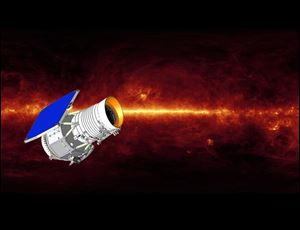
NASA finds 90 percent of largest near-Earth asteroids; finds fewer medium-sized asteroids
9/29/2011
In this undated artist's rendition released Thursday by NASA/Jet Propulsion Laboratory, showing WISE, (Wide-field Infrared Survey Explorer), NASA on said its sky-mapping spacecraft called WISE has discovered 911 of 981 of the largest asteroids and has found more than 90 percent of the biggest asteroids that might pose a threat to Earth.
LOS ANGELES — If you’re worried about a killer asteroid wiping out Earth, NASA has some good news.
The space agency said Thursday it has identified more than 90 percent of giant, potentially Earth-threatening asteroids, including ones as big as the one thought to have killed the dinosaurs eons ago.
“We know now where most of them are and where most of them are going. That really has reduced our risk” of an impact, said Amy Mainzer of the NASA Jet Propulsion Laboratory.
NASA researchers also downgraded their estimate of the number of medium-sized asteroids, saying there are 44 percent fewer than previously believed. The downside is that scientists have yet to find many of these mid-sized asteroids, which could destroy a metropolitan city.
“Fewer does not mean none,” Mainzer said. “There are still tens of thousands out there that are left to find.”
The updated census comes from data from NASA’s sky-mapping spacecraft named Wide-field Infrared Survey Explorer, or WISE, which launched in 2009 to seek out near-Earth objects, galaxies, stars and other cosmic targets.
Unlike previous sky surveys, WISE has sensitive instruments that can pick out both dark and light objects, allowing it to get the most accurate count yet of near-Earth asteroids. The spacecraft takes a small sample of asteroids of varying sizes and then estimates how large the population would be.
For the largest asteroids — bigger than 3,300 feet across — NASA said 911 of the 981 thought to exist have been found. None poses a threat to Earth in the near future, the space agency said.
Previous estimates put the number of medium-sized asteroids at 35,000, but WISE data indicate there are about 19,500 between 300 and 3,300 feet wide. Only about 5,200 have been found and scientists said there is still a lot of work left to identify the potentially hazardous ones.
Results were published in the Astrophysical Journal.
WISE is not equipped to detect the more than a million smallest asteroids that could cause damage if they impact Earth. The spacecraft recently ran out of coolant and is currently in hibernation.